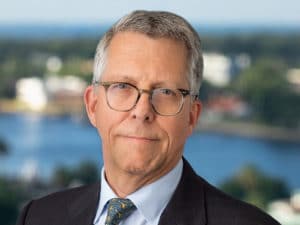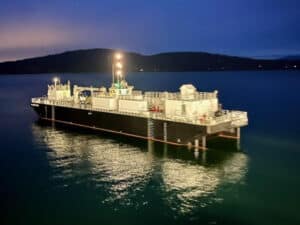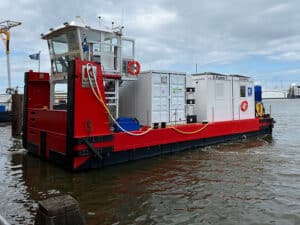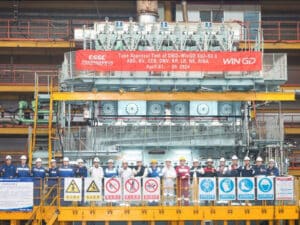
Capital Gas bets big on LCO2 carriers
Written by Nick Blenkey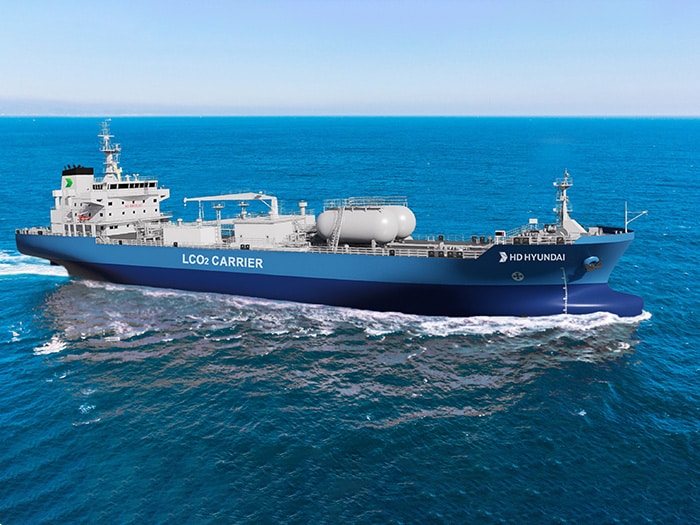
With a length of 159.9 meters and beam of 27.4 meters, the Capital Gas LCO2 carriers are designed to carry up to 22,000 cubic meters of liquified CO2 at -55°C. [Image: HD Korea Shipbuilding]
With carbon capture and storage set to be an increasingly important part of global decarbonization efforts , Evangelos Marinakis’s Capital Gas Ship Management Corp. has placed an order for what will be the world’s two largest liquid CO2 (LCO2) carriers. With a 22,000 cubic meter capacity, they are considerably larger than the world’s first two LCO2 carriers, the two 7,500 cubic meter vessels ordered for the Northern Lights joint venture project.
The vessels have been ordered at South Korea’s Hyundai Mipo Dockyard. According to its parent, HD Korea Shipbuilding & Marine Engineering, the contract is worth KRW 179 billion (about $140 million).
Piraeus-headquartered Capital Gas says the order “constitutes not only a historical milestone for the Capital Group, but for the industry as a whole” that also “underscores the company’s commitment to playing a leading role in the global decarbonization efforts, as actions always speak louder than words”
Capital adds that it “expects the maritime transportation of CO2 to become a rapidly growing market, in which it aims to hold the premier position.”
With a length of 159.9 meters and beam of 27.4 meters, the vessels are designed to carry up to 22,000 cubic meters of liquified CO2 at -55°C and to also have the capability to transport ammonia and LPG, giving them considerable trading flexibility.
Capital says “they are also equipped with numerous energy-saving devices and have been prepared among others for LNG and other alternative propulsion fuels, while they are carbon capture and AMP (cold ironing) ready.” According to HD Korea Shipbuilding, they will be “ammonia dual fuel ready.”
“The specification of these vessels is the outcome of meticulous planning and innovative execution of the company’s technical team, embodying the company’s commitment to in-house expertise and progressive thinking,” says Capital. “In choosing Hyundai Mipo Dockyard for this ambitious project, the company reaffirms the importance Capital assigns in aligning with top-tier partners, who reflect its own commitment to excellence.”
“It is expected that orders for large and ultra-large LCO2 carriers will continue in the future,” said an official at HD Korea Shipbuilding, “we will lead the market in this field based on the technological development achievements that we have accumulated preemptively.”
The shipbuilding giant says it has been striving to develop core technologies in this field by receiving basic certification (AIP) from the American Bureau of Shipping (ABS), Lloyd’s Register (LR), and the Liberian registry for even larger LCO2 carriers with 74,000, 40,000 and 30,000 cubic meter capacities.
How big is the potential market? The shipbuilder cites the Global CCS Institute as saying that, as decarbonization policies are accelerated worldwide, the carbon capture and storage market is expected to grow by more than 30% every year, and the global carbon capture volume is expected to reach 7.6 billion tons by 2050.


